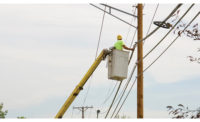Sexual harassment? That’s HR’s problem.
Masculinity and gender identity? That’s for studying in college.
#MeToo movement? That’s about Hollywood harassment.
Workplace violence? Not here.
Not so fast.
These issues can and in some cases do represent workplace danger zones. Is this a stab at political correctness; a stretch in thinking?
No.
For years now many safety and health professionals have been preoccupied with building and sustaining cultures of trust and engagement. That’s key to raising safety levels. A hostile work environment under-cuts all of that work. It’s the last thing professionals want to deal with.
The facts, just the facts
Discussing sexism is like walking through a minefield of opinions left and right, of judgments, stereotypes and embedded beliefs. Let’s stick to the facts.
Many employees in the U.S. don’t feel safe or comfortable on the job, according to the American Working Conditions Survey, created by the Rand Corp., Harvard Medical School and the University of California, Los Angeles. The report surveyed more than 3,000 U.S. workers. What they learned is that many employees are stressed and under a variety of external pressures that take a toll.
One in five employees surveyed said they were exposed to a “hostile or threatening social environment at work.” More than half said they faced “unpleasant and potentially hazardous” conditions.
Younger women were more likely to experience “unwanted sexual attention” at work. Younger men without a college degree were more likely to face “verbal abuse and humiliating behavior.”
Defining sexual harassment
Sexual harassment is unwelcomed behavior that happens because of one’s sex, according to the National Women’s Law Center (NWLC). It happens to both women and men. Men account for nearly one in five complaints of workplace sexual harassment with the Equal Employment Opportunity Commission (EEOC). Harassment does not have to involve any physical contact at all – words alone may be enough, according to the NWLC. This includes repeated requests for dates, lewd remarks, pornographic pictures, or sexual jokes.
Harassment doesn’t fit stereotypes. Males can and do sexually harass males, and females can and do sexually harass females.
The price of machismo
In a hyper-masculine culture, say mining, construction, the military, law enforcement or professional sports, men in some cases are expected to accept the risks of their work, endure pain without complaints, tough it out, and wear disabilities, lost fingers, etc., as badges of honor. These institutional or cultural pressures can produce macho risk-taking and short-cuts, a reluctance to comply with rules, and stifle complaints. Demonstrating one’s masculinity can lead to resisting medical attention for injuries or reporting those injuries, according to a number of studies conducted around the world in various industries.
Macho cultures with competitive peer pressure that require men to showcase physical prowess and emotional control may limit help-seeking behaviors and lead to poor lifestyle choices (smoking, drinking, over-eating, drug use, etc.) and ineffective stress management strategies, according to studies. The result can be ill health effects or untreated injuries.
Gender-based work violence
Workplace violence encompasses more than robbing a convenience store. It ranges from threatening language to homicide, and can be perpetrated by co-workers, supervisors, customers, clients, patients and intimate partners. About 24 percent of workplace violence is related to personal relationships, according to studies.
Gender-based workplace violence also includes: a customer threatens to assault an employee; an employee’s ex-girlfriend incessantly calls and visits the employee during shifts; a supervisor or co-worker fondles an employee, male or female, in a remote part of a factory or worksite; a patient strikes a nurse with a bedside lamp; or a supervisor or co-worker verbally and publically repeatedly insults, degrades and humiliates an employee.
According to the Centers for Disease Control and Prevention (CDC), 16 percent of women and five percent of men have been victims of stalking -- the most prevalent form of abuse at work. Thirty-five percent of surveyed domestic violence perpetrators in the state of Vermont had contacted their partners in an abusive manner during the workday and used work resources to do so, including work phones, work vehicles, work computers, internet or email.
The vast majority of victims know their stalkers, but stalking can occur between strangers, according to the National Center for the Analysis of Violent Crime. Two-thirds of stalkers pursue their victims at least once per week, many daily, using more than one method, according to the RECON Typology of Stalking report.
Harassment, abuse, threats, stalking and physical assaults can traumatize victims. Employees may feel more anxious, distracted, fearful and unable to concentrate due to the threat – all pathways to accidents, according to the National Center for the Analysis of Violent Crime.
Layers of defense
What to do? A workplace policy specific to domestic violence, sexual violence and stalking can include:
- Safety audits can assess if non-employees can physically enter the workplace without presenting identification or interacting with security; if employee personal information is easily accessible; if parking lots and/or paths to public transportation have adequate lighting; and if areas of the workplace exist where employees are isolated or alone for long periods of time.
- Threat assessments can discern the exact nature and context of a threat or threatening behavior; the identified target; apparent motivation; and a perpetrators background, including work history, criminal record, mental health history and past behavior on the job.
- Conduct safety training so employees know how to access assistance.
- Vet all employees and contractors.
- Retain any threatening emails or voicemail messages, and document all threatening acts or behavior in case legal action arises in the future.
- Offer supportive services such as employee assistance programs (EAPs) or referral to local qualified services.
Yes, the goal of sending employees home each night unharmed and healthy includes physical and psychological protection from sexual harassment and gender-based peer pressure, tension and at-risk behaviors.
— Dave Johnson, ISHN Editor, johnsond@bnpmedia.com



